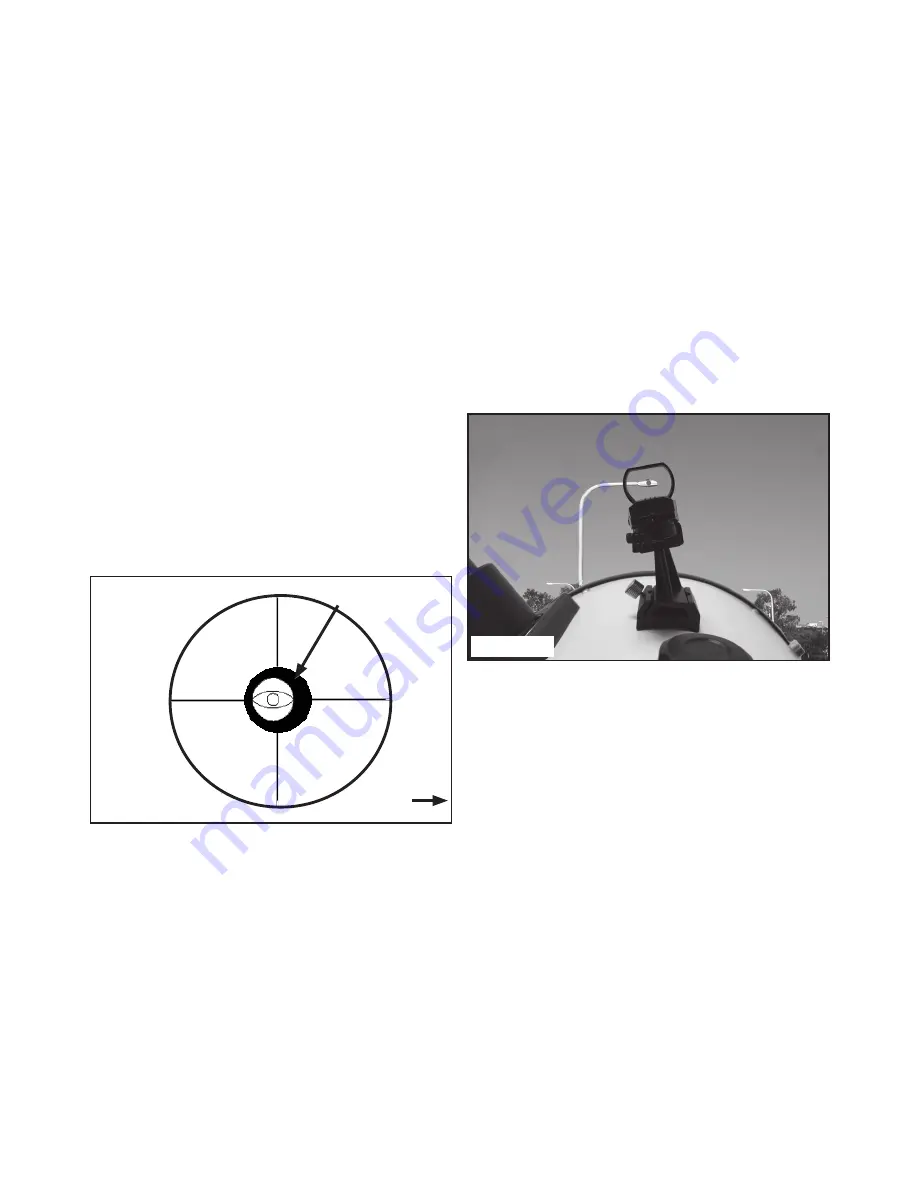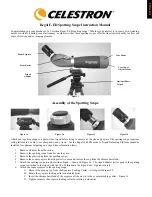
13
reflecting telescopes because of the “fast” f/4.5 to
f/5 focal ratio of the primary mirror.
In typical Newtonian reflectors with more
conventional focal ratios (i.e. longer focal ratios),
when the observer looks down the focuser tube
(without an eyepiece in the focuser), the images
of the secondary mirror, primary mirror, focuser
tube and the observer’s eye appear concentric
relative to each other. This is how the collimation
was adjusted in the section for the Simplified
Collimation described above.
However, with the short focal ratio primary mirror
of the LightBridge Plus, true collimation requires
that the secondary mirror be offset in 2 directions:
(1) away from the focuser and (2) towards the
primary mirror, in equal amounts. This offset is
approximately 1/8” in each direction. Note that
these offsets have been performed at the factory
prior to shipment of your telescope. It is only
necessary for you to confirm that the telescope
has not been badly jarred out of collimation, and to
perform the final fine-tuning on an actual star under
the night sky. See Figure 30.
Figure 30
ALIGNING THE RED-DOT FINDER
It is recommended that you perform steps 1 and 2
of this procedure during the daytime and step 3 at
night.
1. If you have not already done so, place the low-
power 26mm) eyepiece in the focuser draw tube.
(26, Fig. 2) and point the telescope at an easy-to-
find land object (e.g., the top of a telephone pole).
Turn the focuser knob (23, Fig. 2) so that the image
is sharply focused. Center the object precisely
in the main telescope’s field of view and keep it
centered during the finders alignment procedure.
2. Rotate the dial on top of the finder to change
the intensity until you are comfortable with the
brightness. Push the lever below the finder to
change the shape of the red dot with four different
indicator shapes: a dot, a cross, a diamond and a
bullseye.
To align the finder, adjust the hex screws on the top
and side of the finder with the supplied hex wrench
until the finder’s red dot points precisely at the same
object as centered in the main telescope. The red
dot finder is now aligned to the main telescope.
3. Check this alignment on a celestial object,
such as the Moon or a bright star, and make any
necessary refinements.
Figure 31
USING THE DOBSONIAN TELESCOPE
1. Your Dobsonian has been designed with some
inherent friction. You want the telescope to move
easily when you position it, but you also want it
to stay in the position you place it. Using any kind
of oil, silicone spray, wax, or grease will ruin the
performance by causing the telescope to move too
easily. Just keep the altitude and azimuth bearing
surfaces clean; that’s all the maintenance required.
2. The altitude bearing surfaces (10, Fig 1) of the
telescope may become dirty with use. If they do,
clean these bearing surfaces with a dry cloth or
paper towel. Do not use solvents or alcohol-based
cleaning solutions as this may damage the bearings
or the painted surfaces of the telescope.
3. You will notice that your telescope will move
in altitude by raising and lowering the tube, and
in azimuth by rotating the base. As you observe
objects in the night sky they will appear to drift out
of the field of view due to the Earth’s rotation. To
Toward
primary
mirror
Secondary
mirror offset














































